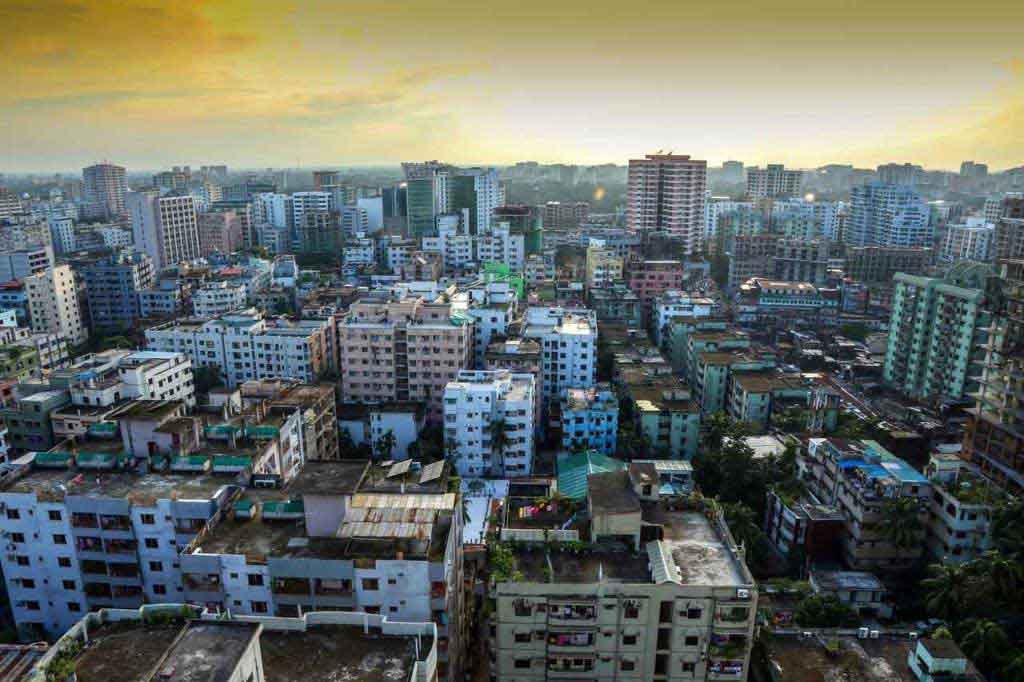
About Bangladesh
Bangladesh is a South Asian country situated in the east of India on the Bay of Bengal. The country is known for its lush greenery and many waterways. The three largest rivers of Asia, the Ganges (locally known as the Padma), the Brahmaputra (locally known as the Jamuna) and the Meghna, flow through Bangladesh and form the fertile Bengal delta which is the largest delta in the world. The Sundarbans, located on the southern coast of Bangladesh which is an enormous mangrove forest and the home of the Royal Bengal Tiger is shared between Bangladesh and India.
The geography of Bangladesh is divided between three regions. Most of the country is dominated by the fertile Ganges-Brahmaputra delta. The northwest and central parts of the country are formed by the Madhupur and the Barind plateaus. The northeast and southeast are home to evergreen hill ranges. The air temperature in this country has never been recorded below 0 °C. Bangladesh has a warm and humid monsoon season that lasts from June to October and supplies most of the country’s rainfall.
MBBS In Bangladesh
Bangladesh is becoming a hot destination for students from countries like India, Nepal etc for getting their MBBS degree. Every year, a large number of international students apply in top medical universities of Bangladesh. The cost of living and education here is quite affordable as compared to other medical colleges around the world. The average cost of the MBBS degree in Bangladesh varies from 24 Lakh INR to 30 Lakh INR.
The medical universities in Bangladesh are recognized and approved by the MCI – Medical Council of India; ECFMG – Education Council for Foreign Medical Graduates, USA; FAIMER’s IMED – Foundation for Advancement of International Medical Education and Research’s International Medical Education Directory; ACGME – Accreditation Council for Graduate Medical Education; MCC – Medical Council of Canada and WHO – World Health Organization. This helps the students who graduate from medical universities in Bangladesh to be eligible to appear for major tests like the USMLE, PLAB and also the screening examination conducted by the National Board of Examinations, India, under the observation of Medical Council Of India (MCI) and practice in all countries across the globe.The infrastructure and quality of education is very good. Students are provided with high quality accommodation at much cheaper rates.
Why MBBS In Bangladesh?
Bangladesh has shown a great improvement in terms of education. With time this country is becoming one of the preferred destinations for medical students around the world who want to get MBBS degree abroad. The following are the reasons why getting MBBS degree from Bangladesh is a good choice for international students:
1. The standard of education is very good and is comparable to other developed countries.
2. The cost of the complete course of MBBS in Bangladesh is quite affordable as compared to other countries across the world.
3. The graduates from the medical universities in Bangladesh are given opportunity to attend various international seminars and conferences. This helps in their development as successful doctors.
4. Bangladesh has Top Medical Universities which offer world class education with high quality standards and well experienced staff.
5. The MBBS degree and other medical degrees obtained from a Bangladesh medical University are recognized by MCI. The students from India are able to come back and work in India.
6. The accommodation is very affordable with high quality standards and facilities.
Benefits of MBBS from Bangladesh
1. The MBBS degree from a Bangladesh Medical University is recognized by WHO and UNESCO and is accepted globally.
2. No entrance test is required for admission which makes the admission process much easier.
3. No donation is required to get admission in a Bangladesh medical college.
4. Students studying in medical colleges in Bangladesh are given opportunity to get an internship in some of the best multinational companies and hospitals of the world.
5. Students are provided with the practicals and experiments to improve their skills in a better way.
6. The quality of infrastructure, education and accommodation is comparable to other developed countries.
7. The hospitals are well equipped with great infrastructure and technology
